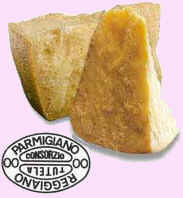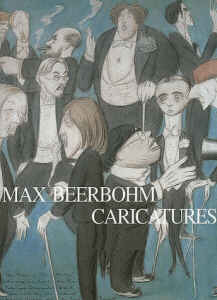^
Born on 24 August 1724: George
Stubbs, British artist specialized
in horses, who died on 10 July 1806, in poor financial circumstances.
— He would become an outstanding animal painter and anatomical draftsman.
The son of a prosperous tanner, Stubbs was briefly apprenticed to a painter
but was basically self-taught. His interest in anatomy, revealed at an early
age, became one of the driving passions of his life. His earliest surviving
works are 18 plates etched for Dr. John Burton's Essay Towards a Complete
New System of Midwifery (1751). In the 1750s Stubbs made an exhaustive
analysis of the anatomy of the horse. He rented a farmhouse in a remote
Lincolnshire village, where, over a period of 18 months, he undertook the
painstaking dissection of innumerable specimens. After moving permanently
to London in 1760, Stubbs etched the plates for Anatomy of the Horse (1766),
which became a major work of reference for naturalists and artists alike.
Stubbs soon established a reputation as the leading painter of portraits
of the horse. His masterly depictions of hunters and racehorses brought
him innumerable commissions. Perhaps more impressive than the single portraits
are his pictures of informal groups of horses, such as Mares and Foals
in a Landscape (1765).
—
Among his contemporaries George Stubbs was known only to a narrow circle
of aristocratic sportsmen and horse lovers, as a mere horse-painter.
George
Stubbs was born in Liverpool, son of a currier and one of five children.
He had a minimum of formal instruction: in 1739 he was briefly a pupil of
the minor painter Hamlet Winstanley (Meeting
of the Waters) . This was apparently enough to launch Stubbs off
as a provincial portrait painter. As such he worked (1743-53) in Wigan,
Leeds, York and at Hull. When at York he already knew enough anatomy to
give private lessons to medical students at York Hospital and this led to
his commissions in 1751 to illustrate a book on midwifery by Dr. John Burton.
He learnt enough of etching from a local engraver to etch the plates himself.
His interest
in anatomy and its studies continued all his life and proved to be important
not only to his art but also a new contribution to science. In 1766 his
The
Anatomy of the Horse was published, which added to his
prestige; he worked on a comparative anatomy of a man, a tiger and common
fowl until his death, it was left incomplete.
At the
age of 30, in 1754 he went to Italy by boat. He is said to have gone with
no enthusiasm for Italian art, but with a desire to confirm his view that
nature, not art, was the only source of inspiration and improvement. On
the return journey he made a stop in Marocco. It is believed that a scene
he saw there inspired his later picture Horse
Attacked by a Lion (1763). In 1756, his son, George Townley
Stubbs (d.1815), was born by Mary Spencer who had become his common~law
wife. In 1759, the family moved to London.
In the
1760s-1770s, Stubbs lived in London. The nature of his commissions required
him to travel almost as much as a topographical watercolorist of his day.
A series of masterpieces mostly belonging to this decade was that depicting
horses and foals. Some of the horses named and were painted for their owners,
but others may have been prompted by Stubbs’s own liking for variations
on the theme Mares
and Foals in a Wooded Landscape (1761), Racehorses
Belonging to the Duke of Richmond Exercising at Goodwood
(1760), Mares
and Foals Disturbed by an Approaching Storm (1765). As
portraits his horses were satisfying to his patrons: Whistlejacket
(1761).
His powers,
however, expanded in other directions. There was an easy transition from
the portraiture of mounted sportsmen to the open-air 'conversation' picture
without reference to hunting or racing. From the end of the 1760s he produced
magnificent examples of the genre The
Melbourne and Milbanke Families (1769), John
and Sophia Musters Out Riding at Colwick Hall (1777).
A separate
development beginning in the 1760s was Stubbs’s portrayal of wild animals.
A unique product of an imaginative kind was the horse and lion series:
Horse
Attacked by a Lion (1770). He was commissioned to paint
the first kangaroo brought to England, for another client he painted a moose
The
Moose (1770); there were commissions for an Indian rhinoceros,
a baboon with a macaque monkey, a yak, and other animals. An exceptional
commission was that commemorating the gift of a cheetah to George III by
the Governor of Madras, Sir George Pigot (later Lord Pigot) Cheetah
with Two Indian Attendants and a Stag (1764-1765).
In the
1770s, Stubbs embarked on new enterprises: he experimented with enamel painting.
He consulted Josiah Wedgwood about the possibility of making large pottery
plaques on which the enamel process could be used. Josiah Wedgwood invited
Stubbs to stay at his Etruria headquarters and experiment. Stubbs lived
with the famous potter in 1780, using the process on pottery plaques in
portraits of Wedgwood and his family, creating experimental paintings on
ceramics. In the great paintings that were still to come, he reverted to
oils, mostly on smooth panels rather than canvas.
An Associate
of the Royal Academy in 1780, Stubbs was elected to full membership in 1781.
The self~portrait of that year, executed in enamel on an oval Wedgwood plaque
Self~Portrait
(1781), shows him at fifty-seven. The Academy did not look kindly to experiments
of the kind, most of its members holding to the conviction that painting
in oils was the proper exercise of professional skill, even watercolor being
grudgingly admitted to its exhibitions. A great development of this decade
was his rendering of rural life and work, especially in the two oil paintings
on panel, The Reapers (1784) and The
Haymakers (1785).
In 1790s
the Prince
of Wales commissioned a painting of members of his favored regiment,
which exercised Stubbs’s powers afresh. Soldiers
of the 10th Light Dragoons (1793). Other works to royal
commission included the portrait presumed to be of Laetitia,
Lady Lade (1793). The Prince’s commissions was further
extended by the herd of red deer he had acquired. Red
Deer Stag and Hind (1792). In all, the 18 paintings by
Stubbs show his powers undiminished and indeed in some ways strengthened
as he neared the age of 70.
— LINKS
— The
Milbanke and Melbourne Families (1770; 758x1136pix,
104kb — ZOOM
to 1895x2842pix, 662kb — or, for more excitement than watching paint
dry, but not a better picture, try
this, 1895x2842pix, 3195kb)
— Captain
Samuel Sharpe Pocklington with his Wife and Sister (1769;
822x1055pix, 114kb — ZOOM
to 2637x2057pix, 673kb — or, for more excitement than watching grass
grow, but not a better picture, try
this, 2637x2057pix, 3162kb)
— Horse
Startled by a Lion — Mares
and Foals (1760) _ detail
— The
Grosvenor Hunt |
 Italian Mannerist
painter, draftsman, and printmaker, born on 11 January 1503, son of Filippo
Mazzola [1460 – <30 Jun 1505], and nephew of Pier'Ilario II Mazzola
[1476 – >30 May 1545] and of Michele Mazzola [1469->1529].
Italian Mannerist
painter, draftsman, and printmaker, born on 11 January 1503, son of Filippo
Mazzola [1460 – <30 Jun 1505], and nephew of Pier'Ilario II Mazzola
[1476 – >30 May 1545] and of Michele Mazzola [1469->1529].  —
[He did paint in oils, but there is no substance to the corny story that
one of his descendants, after immigrating to the US and simplifying his
last name by removing one z, founded the Corn
Products Refining Company which, in his honor, introduced in June 1911
a new cooking and salad oil made from corn and named it Mazola.
Actually this brand name was concocted from the words “maize”
and “oil”.] — [As for Parmesan
cheese, its only relationship to Parmigianino is that they both are
from the Parma region]
—
[He did paint in oils, but there is no substance to the corny story that
one of his descendants, after immigrating to the US and simplifying his
last name by removing one z, founded the Corn
Products Refining Company which, in his honor, introduced in June 1911
a new cooking and salad oil made from corn and named it Mazola.
Actually this brand name was concocted from the words “maize”
and “oil”.] — [As for Parmesan
cheese, its only relationship to Parmigianino is that they both are
from the Parma region]
 Born
Born